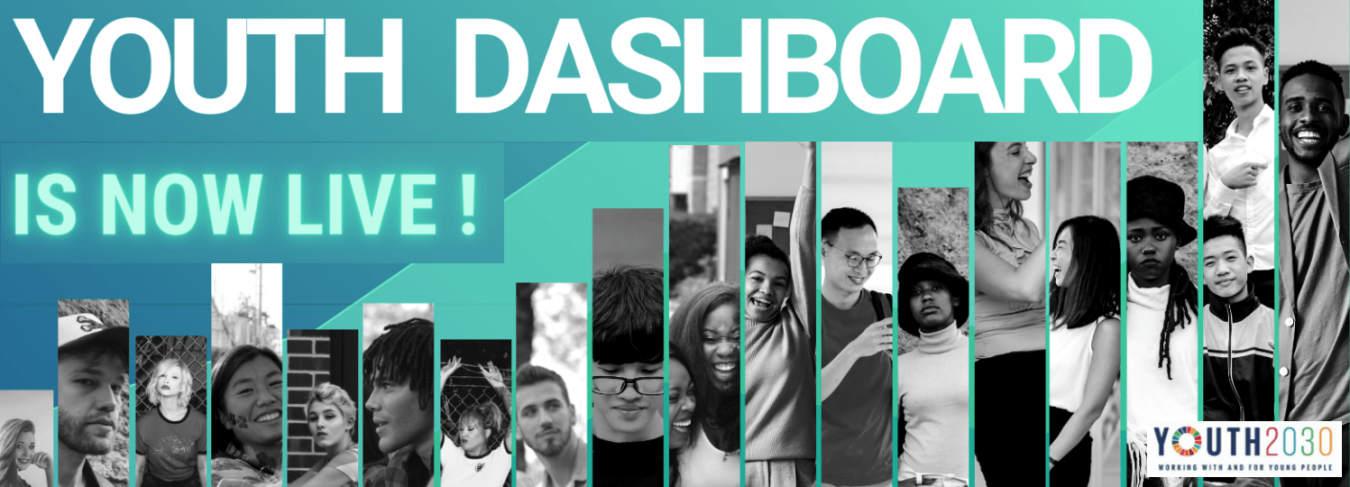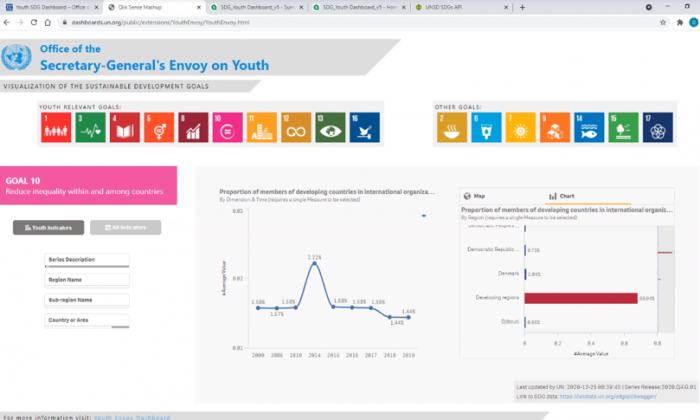OICT Develops Youth SDG Dashboard to Empower Young People to Drive Sustainable Development

Youth development is a cross-cutting theme in the 2030 Agenda for Sustainable Development. With the launch of Youth2030 in 2018, the United Nations strategy on youth, the United Nations has explicitly highlighted the need for expanded global, regional and country-level action to address the needs, build the agency, and advance the rights of youth across the world, ensuring we leave no one behind.
Monitoring frameworks that effectively track youth development indicators across different targets of the Global Goals are key to ensuring we successfully achieve the world we all want.
As the mandate holder leading the implementation of Youth2030, the Office of the Secretary-General’s Envoy on Youth (OSGEY) set out to create a data visualization platform that would allow youth to access information on the status of the SDGs. In collaboration with the Office of Information and Communications Technology (OICT) and Qlik, OSGEY developed the Youth SDG Dashboard. The dashboard lets youth effectively track indicators across various SDG targets, especially those that relate to them.
 “The dashboard combines compelling storytelling with clear data and has the potential to further empower a generation that is already proposing innovative solutions to some the world’s most intractable problems, driving social progress and development,” said Salem Avan, Director, Policy, Strategy & Governance Division, OICT.
“The dashboard combines compelling storytelling with clear data and has the potential to further empower a generation that is already proposing innovative solutions to some the world’s most intractable problems, driving social progress and development,” said Salem Avan, Director, Policy, Strategy & Governance Division, OICT.Ever-evolving technology means that 1.8 billion people between the ages of 10-24—close to 90 percent of them living in developing countries—are connected to each other in ways that was unthinkable not long ago. The meaningful engagement and participation of youth in the implementation, review, and follow-up of the 2030 Agenda as well as other relevant global agendas and frameworks is crucial to their success.
There were several challenges OICT faced in building the dashboard, including:
-
The volume of information: There are 169 targets that define how the 17 SDGs will be tracked and 232 unique indicators that are defined to track these targets.
-
The availability of the data: The information is available through a public Application Programming Interface (API). The API is a multipurpose tool–made available by DESA—and the data is complex, additional technical skill and effort is required to extract the information.
-
The complexity of the data: The data was disaggregated by different groups with varying measures and units making it hard to synthesize data for comparisons and comprehensive reporting.
-
Need for a youth-relevant platform: Although all the SDGs are relevant, some are especially important for youth including Goal 1, Goal 3, and Goal 4, among others [1]. Therefore, there was a need to create a platform where youth can access information pertaining to the relevant Goals.
The Youth SDG Dashboard can be accessed at: www.un.org/youthenvoy/youth-sdg-dashboard/.
[1] Goal 1 calls for ending poverty in all its forms everywhere; Goal 3 calls for ensuring healthy lives and promoting well-being for all at all ages; Goal 4 calls for ensuring inclusive and equitable quality education and promote lifelong learning opportunities for all

